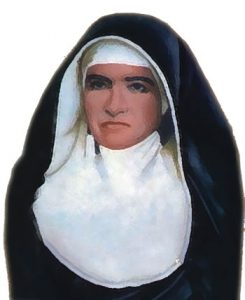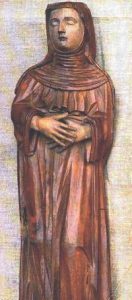January Saints
 Blessed Candelaria de San Jose
Blessed Candelaria de San Jose
(1863-1940)
Susana Paz-Castillo Ramírez was born in Altagracia de Orituco, Venezuela. Her father died when Susana was seven. Her mother was a pious woman, and a hard and honest worker. Till her death in 1887, she dedicated her life to giving her children the best education she could afford and instilled in them Christian faith and values.
After her mother died, Susana assumed the responsibility of the household while practising charity towards invalids who gathered at a house attached to the parish church. In 1903, she became director of San Antonio Hospital, consecrating herself to the service of the sick. Later, she founded a new religious congregation, dedicated to serving the poor. She was appointed General Superior. She made her vows in 1916, taking the name of Candelaria. The Congregation of the Sisters of the Poor of Altagracia de Orituco was confronted by many difficulties in the early days. Providentially, in 1922, the Carmelites of the Ancient Observance arrived on the island of Margarita. Mother Candelaria found them to be a great blessing for her and her Sisters, and some years later affiliated her own Congregation with the Carmelites.
Three things drew attention to this Servant of God: her deep humility, her inexhaustible charity and her joyfulness. She was deeply sensitive to other people’s misfortune. Mother Candelaria travelled widely in search of resources for the support of her works and to found new communities in response to the needs of the moment.
After governing the Congregation for 35 years, she relinquished the office of General Superior to become Mistress of Novices. Her last years were marked by painful disease until she died.
Blessed Candelaria, infuse in us a deep love for the poor.
Source: Internet – various
 Saint Angela of Foligno (1248-1309)
Saint Angela of Foligno (1248-1309)
Angela was born into a rich family at Foligno in Umbria. Married at an early age, she loved the world and its pleasures and, worse still, forgetful of her dignity and duties as wife and mother, fell into sin. But God, having in His mercy inspired her with a deep sorrow for her sins, led her little by little to the height of perfection and to the understanding of the deepest mysteries. Angela has herself recorded the history of her conversion in her admirable ‘Book of Visions and Instructions’.
Some time after her conversion, Angela had placed herself under the direction of Father Arnold and taken the habit of the Third Order of St. Francis. In the course of time the fame of her sanctity gathered around her a number of Tertiaries, men and women, who strove to advance in holiness under her direction.
Later she established a community of sisters at Foligno who added the three vows of religion to the Rule of the Third Order, without, however, binding themselves to enclosure, so that they might devote their time to works of charity.
Saint Angela, obtain for us a true conversion of heart.
Source: http://www.newadvent.org/cathen/01482a.htm
![]() Saint Atticus of Constantinople
Saint Atticus of Constantinople
(d.425)
Born in Sebaste in Armenia, Atticus was reared by monks who held to the heresy of Macedonius, which denied the uncreated divinity of the Holy Spirit; but when he came of age he rejected this error and embraced the Orthodox faith.
He settled in Constantinople and became a priest in the Great Church. Though he had little formal education, his amazing memory, his zeal for Christ, and his powerful sermons recommended him to all, and he was elected Patriarch in 406, during the reign of the Emperor Arcadius. He served as shepherd to the Church for twenty years, ruling always with wisdom and moderation. Though he was unbending in upholding the Faith exactly, he took a conciliatory, persuasive approach to heretics and schismatics; in this way he was able to restore many to the Church rather than driving them away.
His best-known single act is his restoration of the name of St John Chrysostom to the diptychs. Saint John had been unjustly denied commemoration in the Patriarchate since his exile, which had led to a schism; restoration of his commemoration not only corrected a grave injustice but healed a schism. Atticus also presided over the rededication of the Agia Sophia, which had been burned in 404 in the rioting that followed St John Chrysostom’s exile.
Saint Atticus, help us to discern true doctrine from falsehood.
Source: http://www.abbamoses.com/months/january.html
 Entries(RSS)
Entries(RSS)